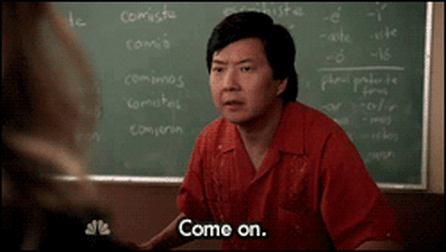Every month—rather, every week, there is a new trend that catches our eye. We buy those trendy sneakers, we make those tiny pancakes for pancake-cereal, and we bake that banana bread. Whether it’s people tweeting about their latest dance challenge or your friends switching to the newest diet, we have a wild urge to stop, stare and add these new fads and frills to our mental wish lists. It’s a weird trait, and ideally, it shouldn’t be something we would relate to. But welcome to 2020; it’s an everyday occurrence. Millennials refer to this phenomenon as Hype Culture — according to Bagpipe, a student-run newspaper, “Hype Culture is used to describe a generation obsessed with finding the next big thing. It is a culture bent on excitement and adrenaline– almost to the point of self-exhaustion.”
Case in point– Dalgona Coffee. Don’t you remember the time when your IG explore page exploded with photos of “Dalgona coffee.” The extra thick and creamy coffee has erupted in popularity on the Internet in early April this year. But Indians always had beaten coffee, and the Koreans have been making Dalgona in Korea for decades now. So why has the trend suddenly caught on? Why does any trend, be it food, clothes, or music, catch on so quickly, you ask? We did some digging to find out what promotes the “next-big-thing” mentality.
SOCIAL SYNERGY
The answer is simple. We want to be a part of something bigger. Whether through new social media trends or the revival of old TikTok ones, we grow up with the idea of bonding through blending. And according to a Ph.D. professor, Dr. Vasily Klucharev, in an article by Science Daily- “We often change our decisions and judgments to conform to normative group behavior.” In simpler terms – we crave the next best thing so badly that we are willing to completely replace whatever we’ve previously liked with something that others might like. That way, when thousands of people and the Jonas Brothers start making the same whipped coffee like us, we feel like we’re part of something huge – even if it’s for a short while.

WHY DO WE LIKE IT?
Following trends is a bizarre kind of peer pressure that actually works because thinking is hard work– and it’s incredibly hard to do it well. It is far easier for us to let someone else do it instead. That way, we can use the decisions made by Instagram celebrities and famous stars as a shortcut to navigate our lives without worrying about the inevitable trials-and-errors. And honestly, we could all use a little help navigating because as long as we do it with our eyes wide open, we might be able to crack the code to hassle-free living.
THE CLOUT FACTOR
Another reason for the allure behind hype culture is the clout that comes with it. Turns out, as much as we want to feel included, we also want to stand out. Owning the new AirPods and having the coolest tie-dye prints allows us to do precisely that. Whether it’s clothes or cars or followers, we let the material stuff create an image of confidence and self-importance around us. While there’s nothing wrong with buying into that, it’s essential to see that these things largely only have value because society believes they do. The temporary band-aid on our personality gets ripped off, and we end up trying to fill that hole all over again with newer, better trends. It’s a twisted process, but something that many of us partake in every day.
To quote Loren Cecil in her article for Esquire – ”participating in these trends has helped me to feel a strange kinship with strangers. It has also distracted me from and gotten me through some of my worst periods of restlessness. Now that I’ve gained the courage to push myself far beyond my comfort zone, where there’s truly no telling what’s next.”
So, what is next for hype? As we recover from a digital world with social media as its crutch, we can easily assume that “hype” won’t hold as much… hype. But as far as we can tell, this culture is here to stay. Be it in the form of responsible buying or reckless spending; it will drive us into using social media and public opinion to decide what we fill our bags with the next time we visit the mall. The question is, how far are we willing to go?


